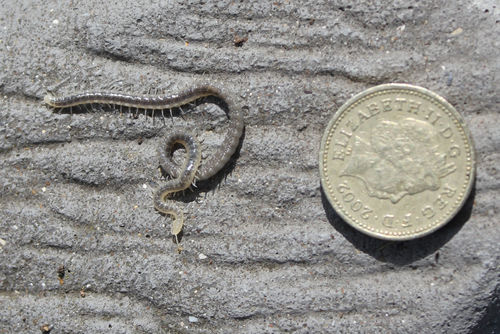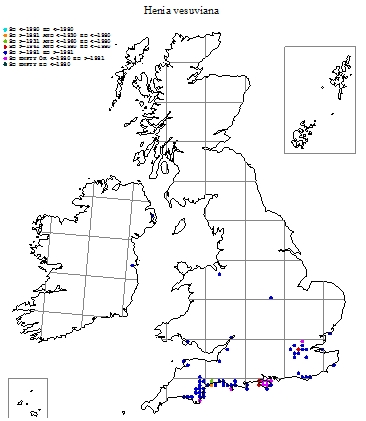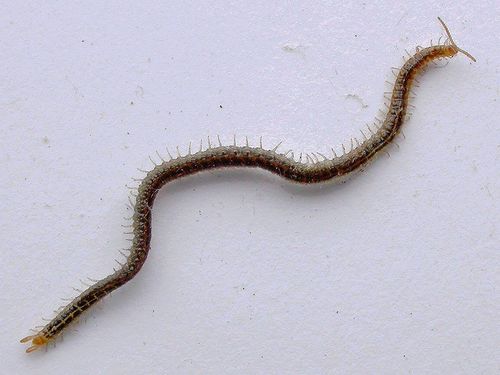Unusual centipede found in Worcestershire
Harry Green (compiler)
On 2nd September 2013 Worcestershire Wildlife Trust received the follow enquiry with a picture:
“Please can you help me by identifying this centipede? It was found in my compost heap and is actually paler than in the photo (01), all silver.
Thank you, Reg. Hawkins”.
The picture was passed to me but apart from commenting that it belonged to the group of centipedes living in soil, the Geophilomorpha, I had no idea of its identity. Looking through the identification key (Barber 2008) I thought it looked a bit like Henia vesuviana pictured on page 94. But this is a coastal species! I sent the picture to the author Tony Barber who replied as follows:
“The consensus so far is that it is an immature Henia vesuviana. Adults are more or less transparent greyish with the grey green cells covering the gut and showing through . Also the white longitudinal dorsal vessel. See picture on front of Aidgap Centipede Key. Quite a lot of records from the South Coast and scattered in synanthropic sites also. Most northerly in England is indoors in Lancashire”. He also sent a map (02) of the national distribution and a picture of the centipede (03).
However all was not plain sailing. Tony Barber sent the picture to a colleague who replied
“I have seen plenty of immature H. vesuviana, but this doesn't look like them - juveniles are distinctly greenish with a pale yellowish dorsal, longitudinal stripe (very like the adults but pale olive green). I don't know what else it could be........”
Impasse! The experts disagree. Unfortunately our efforts to contact the finder have so far failed. We hoped he would go foraging in his compost heap and find us a specimen to identify.
On checking the key against the picture it is impossible to confirm the centipede’s identify without a specimen as some distinguishing features can only be seen with a microscope. Easily seen diagnostic features of H. vesuviana are listed in the key and these include both ends of the adult animal being light reddish brown; greenish grey body contents seen through the transparent skin; and a distinct white line along the dorsum which is actually a blood vessel. Reg Hawkins’ centipede shows the last two features but is pale at both ends hence the suggestion that it is a juvenile (the picture on page 94 of the key shows both ends pale). Characteristically H. vesuviana curls up into a ball in soil with the glandular underparts outward. These produce a sticky secretion so the posture is probably defensive.
We cannot be sure of the identity of the is centipede but it is certainly unlike other Geophilomorpha commonly found in gardens and wiidlands. The true habitat of H. vesuviana is coastal with odd records inland usually associated with human habitations and activities (synanthropic). These animals have probably been transported inland by people or goods moved from coastal places.
Reference
Barber, A.D. 2008. Key to the identification of British centipedes. Field Studies Council AIDGAP key.
Images
01. Reg Hawkins' picture of unidentified centipede.
02. Henia vesuviana national distribution map. A D Barber.
03. Henia vesuviana. A D Barber


